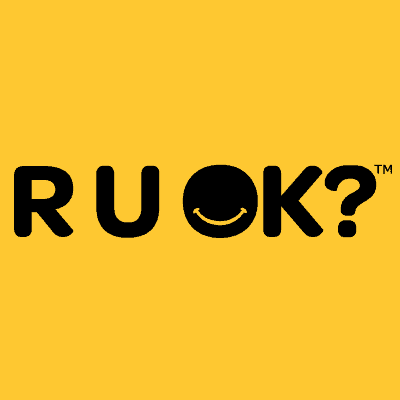A Comprehensive Guide for Parents: Understanding “R U Okay”
Welcome to our informative guide about “R U Okay.” We’ve crafted this resource to help parents gain insight into this simple yet powerful question often presented as an acronym – R U Okay. Let’s work together towards ensuring our kids grow to become resilient, emotionally stable adults.
What does “R U Okay” Mean?
“R U Okay,” a phrase adopted by the younger generation is a shortened version of “Are You Okay?” It’s a caring, quick and simple inquiry used to check up on someone’s mental and emotional wellbeing. Originating from the digital communication world, it has found an important place offline as well.
The Significance of “R U Okay” for Parents
Being a parent is no easy task because it entails being accountable for not just the physical but also the emotional and mental health of your little ones. This is where understanding the essence of “R U Okay” comes into play.
The Power of Checking In
Asking “R U OK?” serves as a powerful way of checking in on your child’s emotional wellbeing. It helps frame an open, non-judgmental space where kids can feel safe to express their thoughts and feelings.
The Gaps in Virtual Communication
In the age of digital communication, the importance of in-person and meaningful conversation has seen a decline. By incorporating the simple practice of asking “R U Okay”, you’d be bridging the gap between digital shorthand and real-life heartfelt communication, thereby deepening your bond with your child.
Preventive Mental Health
Initiating regular “R U Ok” conversations is crucial for preventive mental health. Just as we teach children the importance of physical hygiene, educating them about emotional hygiene is equally critical. The “R U Ok” conversation plays a proactive role in this process.
Speaking your child’s language creates a common ground of understanding. This guide aims to aid you in comprehending the full importance and potential of the phrase “R U OK”. By the end of this journey, we hope you’ll be equipped to nurture a safe, supportive environment for your child’s emotional well-being. Stay tuned as we dive deeper into the world of “R U OK”.

Tips on How to Ask “R U Okay”
Understanding the intent behind the question “R U Ok” is one thing, but how do we effectively communicate it to our children? The following are some tips to guide you:
Choose the Right Time and Place
Timing is everything. Choose a quiet, private place and a time when your child is calm. Ensuring a comfortable environment would make them more inclined to open up about their feelings and thoughts.
Keep It Simple
Keep your conversation simple and straightforward. Avoid complex questions that might confuse or frustrate your child. The goal is to create a safe and non-threatening environment where your child can express his/her thoughts freely.
Be Patient
Patience is key. Your child might not be ready to talk immediately, and that’s okay. If they’re not ready to open up, do not force the conversation. Try again a little later.
Really Listen
Listening is half the solution. Be sure to listen actively and non-judgmentally. Let your child lead the conversation. Your role is not to fix things but to provide a safe space for expression.
The Aftermath Of The “R U Okay” Conversation
Develop Healthy Coping Mechanisms
Teach your child healthy ways to cope with their feelings. None of us are born with these skills, hence it’s up to you to lead the way. Deep breathing exercises, mindfulness, hobbies can be a few ways to cope.
Professional Support
If you feel the conversation highlighted concerns beyond your capabilities, don’t hesitate to seek professional help. Therapists and counselors are trained to handle such scenarios.
Conclusion
To conclude, “R U Okay” is not just a question, it’s an approach to nurture emotional wellness in your child. By regularly checking in with our kids, we can ensure their emotional well-being, build stronger relationships, and help them grow into emotionally resilient humans.
Preparing for R U Okay: What Parents Should Know
Are you aware of the R U Okay? day. This public awareness day aims to promote open discussion about mental health. Here are five considerations for parents who want to actively participate and prepare their family for R U Okay? day.
1. Understand the Concept
Educate yourself about the essence of R U Okay day. Understanding the purpose, which is to encourage people to check-in with each other emotionally and mentally, will empower you to have meaningful conversations with your children about mental health.
2. Encourage Open Conversation
Maintain open communication in your family. This day is about encouraging dialogue about emotional wellness, so promote that within your household. Make sure your children feel comfortable discussing their feelings with you.
3. Role Model Good Mental Health
Show your children what good mental health practices look like by being a role model. Show them it’s okay to talk about mental health, to take breaks when needed, and to seek help when feeling overwhelmed.
4. Create a Supportive Environment
Acknowledge your children’s feelings and let them know it’s okay not to be okay sometimes. Make sure they feel surrounded by love and support, so they know they can come to you when they’re struggling.
5. Know Where to Get Help
Familiarize yourself with different resources like hotlines, support groups or counseling services, so you know where to guide your children if they need professional help.
R U Okay day serves as a reminder that emotional health matters. By keeping these key things in mind, you can ensure that your children feel supported, understood, and well-prepared for R U Okay day.
For more great articles please see here. For more information see here
Disclaimer
The articles available via our website provide general information only and we strongly urge readers to exercise caution and conduct their own thorough research and fact-checking. The information presented should not be taken as absolute truth, and, to the maximum extent permitted by law, we will not be held liable for any inaccuracies or errors in the content. It is essential for individuals to independently verify and validate the information before making any decisions or taking any actions based on the articles.




